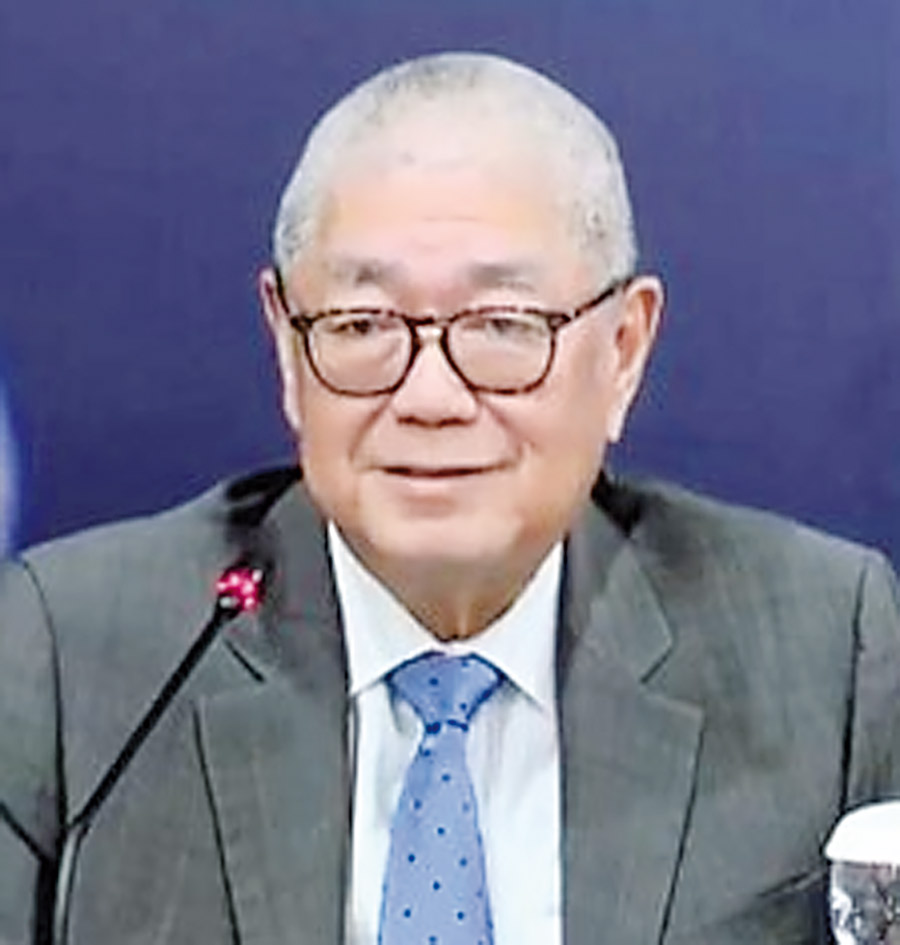Higher prices of food, transport and utilities pushed inflation higher to 4.4 percent in July from the previous month’s 3.7 percent, the Philippine Statistics Authority yesterday said.
This brings the national average inflation to 3.7 percent, at the higher end of the government’s target range of between 2 and 4 percent.
Claire Dennis Mapa, national statistician and civil registrar general, said the uptrend was primarily influenced by the higher year-on-year increase in the index of housing, water, electricity, gas and other fuels.
“The faster annual growth rate of the heavily-weighted food and non-alcoholic beverages index at 6.4 percent also contributed to the uptrend of the overall inflation. Higher inflation rates during the month were also noted in the indices of transport at 3.6 percent and education services at 5.8 percent,” Mapa said.
In contrast, the following commodity groups registered lower inflation rates during the month: alcoholic beverages and tobacco; clothing and footwear; health; recreation, sport and culture; and restaurants and accommodation services.
Core inflation, which excludes selected food and energy items, slowed down to 2.9 percent from 3.1 percent in the previous month. In July 2023, core inflation was higher at 6.7 percent.
Mapa said food inflation at the national level rose to 6.7 percent from 6.5 percent in June.
“The acceleration of food inflation was mainly brought about by the year-on-year increase in meat and other parts of slaughtered land animals index. The index of fruits and nuts also contributed to the uptrend. However, slower annual decline was noted in the indices of fish and other seafood and oils and fats,” Mapa said.
Food inflation shared 54.3 percent or 2.4 percentage points to the overall inflation in July.
Inflation rate in the National Capital Region (NCR) also moved at a faster rate of 3.7 percent. Areas outside NCR also showed an uptrend of 4.6 percent.
Thirteen regions outside NCR exhibited higher inflation rates. Bangsamoro Autonomous Region in Muslim Mindanao registered the highest inflation rate of 5.7 percent while Region I (Ilocos Region) remained as the region with lowest inflation rate for the seventh consecutive month.
Only temporary
“The latest inflation outturn is consistent with the BSP’s (Bangko Sentral ng Pilipinas) latest assessment that inflation will temporarily settle above the target range in July 2024 due mainly to higher electricity rates and positive base effects but will likely follow a general downtrend beginning in August 2024,” said Eli Remolona Jr., BSP governor, adding that the July reading is within the BSP’s forecast range for the month of between 4 to 4.8 percent.
“The balance of risks to the inflation outlook has shifted to the downside for 2024 and 2025 due largely to the impact of the lower import tariff on rice under Executive Order (EO) 62 (Series of 2024). Nonetheless, higher prices of food items other than rice, as well as higher transport and electricity charges continue to pose upside risks to inflation,” Remolona said.
He said the Monetary Board will consider the latest inflation outturn as well as the second quarter 2024 national accounts in its assessment of the inflation outlook and the balance of risks in the August 2024 monetary policy meeting.
“The BSP will ensure that monetary policy settings remain in line with its primary mandate to safeguard price stability conducive to sustainable economic growth,” the BSP chief added.
Finance Secretary Ralph Recto, meanwhile, has assured the public the inflation rate in July is likely a one-time uptick due to high base effects and is expected to temper and fall within target for the rest of the year as government interventions take full effect.
“Inflation rate is expected to stabilize and fall within target for the rest of the year as the impact of government interventions, particularly the reduced rice tariffs, will be more pronounced starting this August. Although, we might see slight increases in vegetable prices due to damages brought by Typhoon Carina in the agriculture sector,” Recto said.
Recto further assured the public the decline in retail prices of rice will become more apparent in the coming months as the volume of rice imports at lower tariff is anticipated to increase and augment local supply.
Arsenio Balisacan, National Economic and Development Authority secretary, also assured the public government is implementing crucial interventions to support the most vulnerable sectors and ensure food security amid the ongoing La Niña phenomenon and the higher inflation.
“The government is relentlessly working to address our nation’s most pressing concern of ensuring food security for every Filipino amid the faster rise in prices in July and the expected typhoons and rains due to the onset of La Niña this August,” Balisacan said.
He added the weather phenomenon is expected to persist until the first quarter of 2025.
He said in preparation for La Niña, the Department of Agriculture (DA) has assured the availability of the quick response fund, assistance, credit and the seed buffer stock.
The agency has also expedited the declogging of farm drainage systems and constructing water-impounding projects and post-harvest facilities.
To assist farmers in dealing with higher fuel prices, DA will provide around P510 million in fuel subsidies to crop, livestock and poultry farmers. It is anticipated that around 160,000 farmers will benefit from over P3,000 in fuel assistance between August and September 2024.
“Between 2023 and 2021, about 2.5 million Filipinos were lifted out of poverty, bringing our country’s poverty incidence down to 15.5 percent from 18.1 percent. Our goal now is to sustain this momentum by addressing the constraints to food security and economic development more broadly,” Balisacan said.
Rate cut unlikely
“Faster inflation reduces rhetoric possibility of a 0.25 local policy rate cut, as signaled by local monetary officials lately. But local policy rate cuts remain possible in the coming months, especially if inflation would stay well within the 2 percent-4 percent inflation target,”said Michael Ricafort, chief economist for Treasury Group of Rizal Commercial Banking Corp.
Bank of the Philippine Islands said the probability of a rate cut from the BSP in August has declined now that headline inflation is once again above its target.
“The BSP’s decision on August 15 will also depend on the upcoming GDP data, which could either prompt a delay in rate cuts if GDP exceeds expectations or justify an immediate rate cut if the data significantly misses the forecasts. The BSP will likely prioritize domestic data in its policy decision on August 15, but it may also consider global developments. Any signals from the Federal Reserve suggesting a substantial rate cut in September could increase the chances of a rate cut from the BSP in the next policy meeting,” BPI said.
“Nevertheless, we maintain our view that rate cuts are on the horizon given the favorable outlook for inflation. The recent drop in core inflation to 2.9 percent supports the argument for a potential rate cut in the coming months,” BPI added.
Miguel Chanco, chief Emerging Asia economist of Pantheon Macroeconomics, said the July breach of the BSP’s target range likely means that an August rate cut is now off the table.
“We still think that 75bp-worth of cuts is doable by year-end, especially if we’re right about the Fed’s potentially much larger cuts in the fourth quarter, following an initial 25bp cut in September. Accordingly, our revised base case for the BSP is a 25bp cut in October, followed by a 50bp in December. To be sure, if we’re right about a likely huge miss in Thursday’s Q2 GDP report, then an August cut could come swiftly back into the discussion,” Chanco said.
As inflation outlook shifted to downside, the Monetary Board during its last meeting in June decided to maintain the key rates of the BSP and hinted a “somewhat more likely” rate cut when it next meets this month.
BSP’s Target Reverse Repurchase (RRP) Rate remains at 6.50 percent. The interest rates on the overnight deposit and lending facilities will also remain at 6 percent and 7 percent, respectively.
“(We’re) somewhat more dovish than before,” Remolona said after the meeting. He hinted at a possible total cut of 50 basis points for this year – 25 basis points each for the third and fourth quarter.
June’s action was the sixth consecutive time that the Monetary Board decided to keep steady the key rates after the 0.25 off-cycle rate hike last Oct. 27, 2023.







